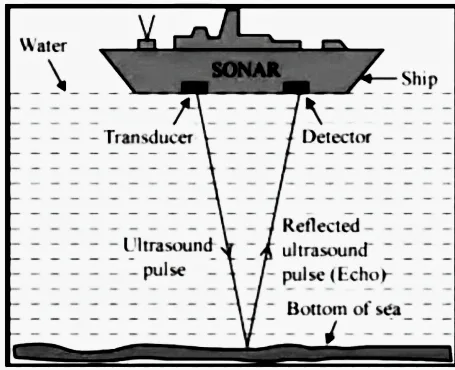Introduction
Have you ever wondered how quickly sound travels through the air? The speed of sound is a fascinating concept that plays a crucial role in our everyday lives, from the crackling thunder of a storm to the melodic tunes of your favorite song. In this blog, we’ll understand the mystery behind the speed of sound, discussing its definition, factors that influence it, and real-world examples that showcase its significance.
Table of Contents
Understanding Sound and “How fast is the Speed of sound”.
The Nature of Sound Wave
Sound is a form of energy that travels in waves through different mediums, such as air, water, or solids. These waves consist of compressions and rarefactions, creating variations in pressure that our ears perceive as sound.These waves are born from vibrations, such as those produced by a plucked guitar string or the vocal cords of a singer. As these vibrations ripple through a medium, they cause neighboring particles to compress and expand, creating a wave pattern that propels the sound energy forward.
Defining the Speed of Sound
The speed of sound refers to the rate at which sound waves travel through a medium, typically air. It is a fundamental physical property that depends on various factors, including the properties of the medium and the temperature of the surroundings. However, it’s important to recognize that this speed is not uniform across all substances. It varies based on factors such as the material’s elasticity and density. This results in different speeds of sound when sound waves traverse through air, water, or solids.

Factors Affecting Sound Speed
Factors Influencing the Speed of Sound
- Medium: The speed of sound varies depending on the medium through which it travels. Sound travels faster in solids and liquids than in gases like air. This is due to the greater density and stronger intermolecular forces in solids and liquids, which facilitate faster transmission of sound waves.
- Temperature: Temperature has a significant impact on the speed of sound. In general, sound travels faster in warmer air and slower in colder air. This is because higher temperatures lead to increased molecular motion, resulting in faster propagation of sound waves.
- Pressure: Changes in atmospheric pressure can also influence the speed of sound. At higher altitudes where air pressure is lower, sound waves encounter less resistance and can travel slightly faster.
What is the Speed of Sound in Different Mediums?
The general equation for the speed of sound in a medium can be represented as follows:
$$v=\sqrt{\frac B\rho}$$
Where:
- v is the speed of sound.
- B represents the bulk modulus of the medium, which is a measure of the medium’s resistance to compression.
- ρ is the density of the medium.
Speed of Sound in Air
In the air at room temperature, which is approximately 20 degrees Celsius or 68 degrees Fahrenheit, sound travels at an approximate speed of 343 meters per second (1235.5 feet per second). This speed, however, isn’t static; it can fluctuate with changes in temperature, humidity, and altitude.
In Gases
For gases, the speed of sound is given by:
$$v=\sqrt{\frac{\gamma P}\rho}$$
Where:
- v is the speed of sound
- γ is the adiabatic index of the gas
- P is the pressure of the gas
- ρ is the density of the gas
Speed of Sound in Water
Water, with its higher density compared to air, provides a more conducive environment for sound transmission. The speed of sound in water is approximately 1482 meters per second (4860 feet per second), making it about four times faster than in air.
In liquid
$$v=\sqrt{\frac B\rho}$$
Where:
- v is the speed of sound
- B is the bulk modulus of the liquid
- ρ is the density of the liquid
Speed of Sound in Solids
Solids boast an even faster transmission of sound due to their tightly packed particles. For instance, sound travels through steel at a blazing speed of about 5960 meters per second (19550 feet per second).
In Solids
The speed of sound in a solid material can be mathematically expressed as:
$$v=\sqrt{\frac E\rho}$$
Where:
- v is the speed of sound
- E is the Young’s modulus of the material
- ρ is the density of the material
Example Calculation
Let’s say we want to calculate the speed of sound in air at room temperature (20°C or 68°F). The values we need are:
Bulk modulus of air (B) = 1.42×105 N/m2
Density of air (ρ) = 1.225 kg/m3
Putting these values into the general formula:
$$v=\sqrt{\frac{1.42\times10^5}{1.225}}\approx343\;\frac ms$$
Hence, at room temperature, speed of sound in air is approximately 343 meters per second.
Comparing Speeds
To put things in perspective, let’s compare the speed of sound to the speed of light (c):
Speed of sound(v)≈343m/s
Speed of light (c)≈299,792,458m/s
Light travels approximately 874,030 times faster than sound.
Real-World Examples
- Thunder and Lightning: When lightning strikes, the rapid expansion of air generates shockwaves that we hear as thunder. The delay between seeing the lightning and hearing the thunder is due to the difference in the speed of light (which is much faster) and the speed of sound. By counting the seconds between seeing the lightning and hearing the thunder, you can estimate the distance of the lightning strike.
- Sonic Booms: Supersonic aircraft, such as fighter jets, can travel faster than the speed of sound. When they exceed this threshold, they create shockwaves known as sonic booms. These booms are the result of sound waves compressing as they accumulate in front of the aircraft, causing a sudden release of energy that reaches the ground as a loud noise.
Practical Applications of Sound Speed
Sonar and Underwater Navigation
The speed of sound plays a important role in underwater navigation and communication. Sonar technology employs sound waves to navigate the depths of oceans, employing the time it takes for sound to bounce off objects and return to calculate distances and create underwater maps.

Medical Imaging Techniques
In the world of medicine, the speed of sound finds application in ultrasound imaging. By emitting sound waves into the body and analyzing their echoes, doctors gain insights into the internal structures of patients without invasive procedures.
Music and Sound Production
The speed of sound plays a critical role in the field of music and sound production. Musicians and engineers need to consider sound travel times when setting up equipment and designing acoustics for concert venues and recording studios.
Medical Imaging
In medical imaging techniques like ultrasound, sound waves are used to create images of the body’s internal structures. The speed of sound in different tissues helps determine the depth and distance of structures being imaged.

Earthquake Detection
Seismic waves generated by earthquakes travel through the Earth’s crust at varying speeds. Monitoring the time it takes for these waves to reach different seismic stations helps scientists locate the epicenter of an earthquake.
Supersonic Flight
The development of supersonic aircraft, such as the Concorde, was a technological milestone, allowing passengers to travel faster than the speed of sound. The Concorde could reach speeds of Mach 2, twice the speed of sound.

Conclusion
In conclusion, the nature and speed of sound are fascinating aspects of our acoustic world. Understanding how sound travels and its behavior in different mediums is essential for numerous scientific, industrial, and recreational applications. So, the next time you hear thunder or enjoy your favorite music, you’ll have a deeper appreciation for the speed at which sound reaches your ears and the unique nature of this incredible phenomenon.
FAQs about Sound Speed
- Can sound travel in a vacuum?
- No, sound requires a medium for propagation, so it cannot travel through a vacuum.
- Does sound travel faster in solids or liquids?
- Sound travels fastest in solids due to the tight arrangement of particles.
- How does humidity affect the speed of sound?
- Humidity can impact the speed of sound in air, generally causing it to travel faster in humid conditions compared to dry ones.
- Why is the speed of sound faster in water than in air?
- The higher density of water allows sound waves to travel more efficiently, resulting in a higher speed.
- Can the speed of sound be altered?
- Yes, the speed of sound can be influenced by changing factors like temperature, pressure, and the medium through which it travels.

